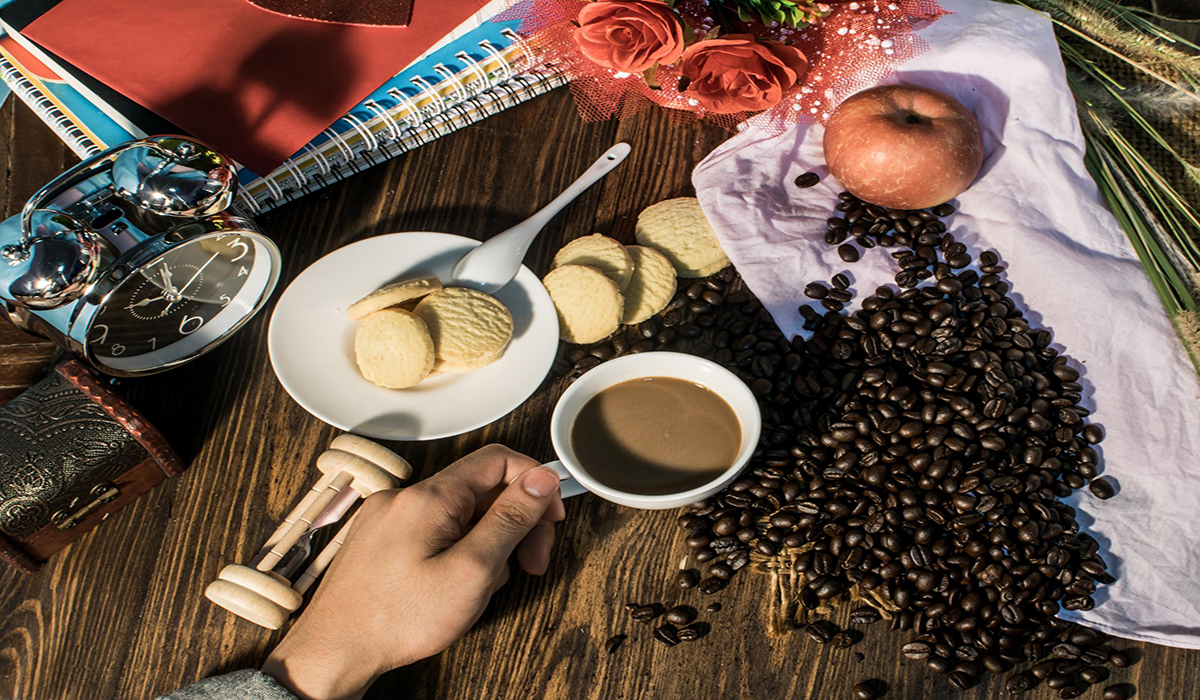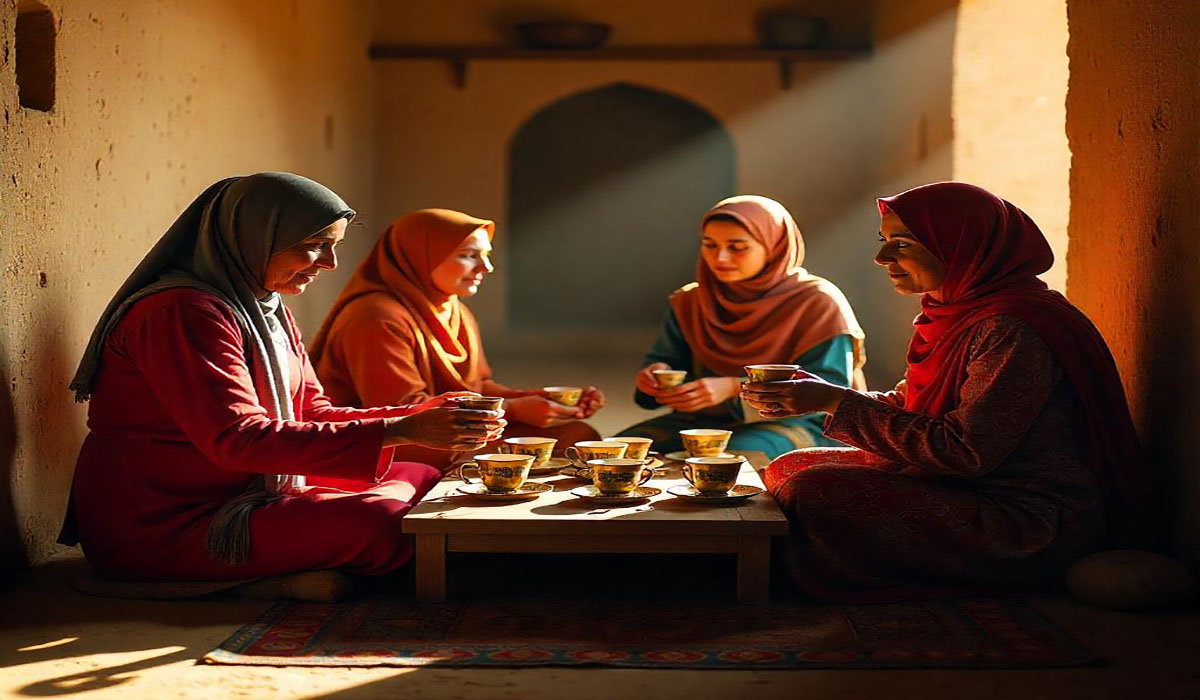Coffee consumption culture: Is the bitter taste of this beverage the most enjoyable choice for people around the world?

At first glance, it seems strange that a bitter drink like coffee has managed to captivate millions of people. The human brain naturally avoids bitter tastes, as bitterness in nature often signals toxicity. However, coffee consumption culture shows that this rule is not always absolute.
Scientists believe that coffee drinkers gradually not only get used to its bitterness but also come to enjoy it. This phenomenon is known as “oral masochism” — taking pleasure in a taste that is initially unpleasant. Interestingly, people in different parts of the world experience the bitter taste of coffee in different ways.
The coffee consumption culture in Scandinavia has developed around lighter and more acidic coffees, while people in Southern Europe and the Middle East tend to prefer darker and more bitter brews. These differences show how much human taste can adapt to culture and environment.
The Science Behind the Pleasure of Coffee
Beyond its bitterness, coffee is a complex blend of over a thousand chemical compounds. The coffee consumption culture in each region is shaped by which flavors are emphasized. For example, during the roasting process, the Maillard reaction (a combination of proteins and sugars) creates caramel, chocolatey, and even fruity flavors.
At Parto Padideh Company, coffee processing is carried out in a way that highlights the desirable flavors preferred in each region. Studies show that the release of dopamine in the brain while drinking coffee is not solely related to caffeine. The aroma of coffee, its temperature, and even the sound of pouring it into a cup all contribute to the feeling of pleasure. The coffee consumption culture engages all five of our senses, turning it into a multi-dimensional experience.
Coffee Consumption Culture in Different Countries Around the World
The culture of coffee drinking varies from one country to another and often reflects the social customs, lifestyle, and cultural values of each region.
Coffee Drinking Culture in Italy
- Espresso takes center stage. Italians often drink espresso quickly and while standing at cafés.
- Drinking cappuccino after 11 a.m. is considered unusual!
Coffee Culture in Turkey
- Turkish coffee is strong, foamy, and often accompanied by sweets like baklava or Turkish delight.
- Coffee fortune-telling (reading the coffee grounds) is an inseparable part of Turkish coffee culture.
Coffee Etiquette in Saudi Arabia and the Gulf Countries
- In Arab countries, coffee is brewed with cardamom, cloves, and saffron.
- It is usually served with dates and during formal gatherings.
- Coffee serving etiquette is precise and symbolic.
Coffee Culture in the United States
- Drip coffee is the most commonly consumed type.
- Takeaway coffee reflects the modern and fast-paced American lifestyle.
- Brands like Starbucks have reshaped the café culture.
Coffee Traditions in Japan
- Despite its traditional tea culture, coffee is on the rise in Japan.
- The Japanese value high-quality, specialty coffee and manual brewing methods like pour-over.
Coffee Culture in Iran: From Traditional Rituals to Modern Lifestyles
The culture of coffee drinking in Iran is a blend of native customs, cultural influences from neighboring regions, and global modern trends. Although Iran is traditionally known for its tea culture, coffee has held a special place in Iranian history and lifestyle—and its prominence is steadily increasing. In some southern and western regions of the country, such as Khuzestan, Bushehr, Ilam, and Kermanshah, traditional coffee-drinking customs have been preserved. In these areas, coffee plays a significant role in religious ceremonies, family gatherings, and tribal events. Arabic coffee rituals, such as serving coffee in small cups and exchanging it with specific gestures, are considered an integral part of local cultural identity.
Coffee Culture in Khuzestan
With its Arabic-speaking population, Khuzestan has preserved much of the Arab coffee tradition. Coffee is essential at both mourning and celebratory events. In traditional judicial gatherings (mahkama), drinking coffee has symbolic importance. In engagement ceremonies and formal meetings, Arabic coffee is typically the first refreshment served to guests. This tradition is deeply rooted in values of hospitality, respect, and long-standing customs.
Roles in Khuzestan’s Coffee Rituals Include:
- Coffee Maker (Maqahwi): The individual responsible for preparing and serving coffee. This role carries significant respect.
- Coffee Cup (Finjan): Coffee is typically served in small, handleless cups and is meant to be consumed in a single sip.
- Number of Cups: The number of cups consumed depends on the relationship between host and guest. In Khuzestani Arab culture, drinking one cup signifies courtesy and respect, while guests may choose to drink two or three.
- Shaking the Cup: To signal that no more coffee is desired, the guest slightly shakes the cup when handing it back to the server.
Type of Coffee: Khuzestani coffee is typically Arabic, brewed with lightly or medium-roasted beans, cardamom, and occasionally saffron.
Coffee as a Social Experience
More than just a beverage, coffee serves as a means for social interaction. The coffee consumption culture in cafés, workplaces, and homes reveals that the enjoyment of coffee is often intertwined with the enjoyment of company. For many people, the bitter taste of coffee is tied to the sweet memories of friendly conversations, successful meetings, or peaceful early mornings.
Statistics show that over 80% of regular coffee drinkers consider coffee an inseparable part of their daily routine. Coffee consumption culture has become so embedded in modern life that for many, a day without coffee feels incomplete. This dependence stems not only from coffee’s physiological effects but also from its social and psychological roles.
The Evolving Palate of New Generations
Younger generations view coffee through a different lens. Coffee consumption culture among Gen Z and Millennials is marked by a preference for specialty brews, creative beverages, and novel experiences. Interestingly, unlike previous generations, they often begin their coffee journey with sweet, flavored drinks like mochas and caramel lattes and gradually transition to bolder, more complex flavors.
This reversed path in developing taste is a new phenomenon in coffee consumption history. Research shows that today’s youth see coffee as more than just a drink—they regard it as a part of their identity. Coffee consumption culture on social media is evident through artistic photos of coffee cups and shared café experiences. This generation is willing to spend more on high-quality coffee and dedicate time to learning about various beans and brewing methods.
A Global Journey of a Magical Flavor
Coffee has transcended cultural borders and manifested differently in every land. In Italy, coffee culture is defined by small, strong espressos, while in Turkey, the beloved brew is a thick, grounds-filled coffee known as Turkish coffee. Vietnamese people enjoy their coffee with sweetened condensed milk, and Ethiopians serve it with butter and salt.
This diversity illustrates how the bitter taste of coffee has been embraced and interpreted uniquely by each culture. What unites all these variations is the sense of satisfaction and pleasure experienced by coffee drinkers. Despite the external differences, coffee culture everywhere is intertwined with concepts such as relaxation, focus, energy, and social connection. This shared meaning has made coffee a universal language that crosses all borders and cultures.
The Future of the Beloved Bitter Taste
With growing awareness about coffee and consumers’ increasingly sophisticated palates, coffee culture is entering a new phase. Today, consumers pay close attention to the origin of coffee, processing methods, and even the conditions of farmers. Leading companies like Parto Padideh have recognized these sensitivities and are moving toward producing sustainable, high-quality products, shaping the future of coffee in Iran toward transformation and excellence.
Taste alone is no longer the only criterion for choice; the story behind every cup of coffee holds equal importance. Technological innovations in coffee processing and brewing have created new opportunities to control flavor and bitterness precisely. Coffee culture is moving toward greater personalization.
Smart coffee machines can accurately adjust grind size, temperature, and brewing time to let each person enjoy their preferred taste. These advancements highlight that the pleasure of coffee depends less on its inherent bitterness and more on its ability to adapt to diverse tastes.
Conclusion: The Secret of Global Popularity
The answer to why coffee is so beloved worldwide lies in its complexity and flexibility. Coffee culture demonstrates that the bitter taste of this drink has not been a barrier to its popularity; rather, it has become part of its charm. Coffee has preserved its core identity while appearing differently in every culture, adapting to diverse preferences.
Coffee is more than a beverage—it has become a multisensory, social experience deeply intertwined with the spirit of modern life. Its profound connection to daily life’s meaningful moments, collective memories, and social interactions has elevated coffee beyond mere taste. Perhaps the secret of coffee’s popularity is not in its bitterness, but in its ability to create the sweet moments of life.




